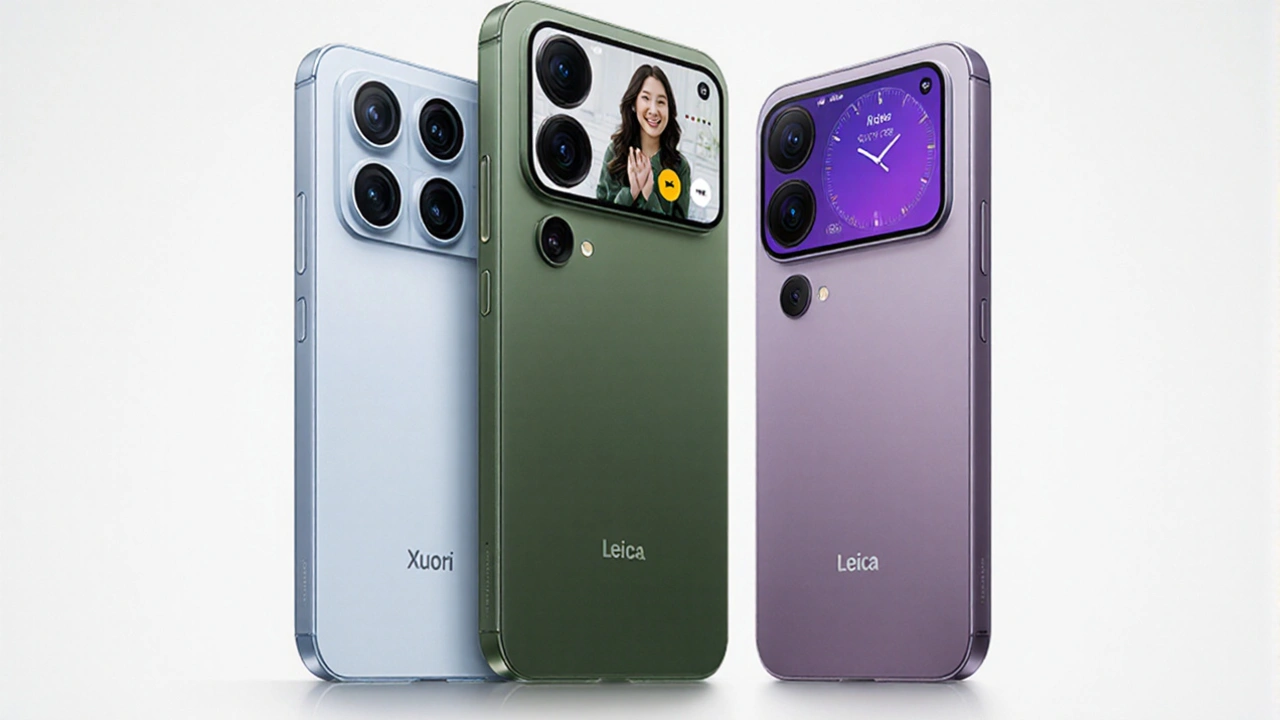Dual-Display Smartphone Overview: What You Need to Know
If you’ve ever wished your phone could do two things at once, a dual‑display smartphone might be the answer. These devices pack a second screen on the back or fold out like a mini‑tablet, giving you extra space for multitasking, gaming, or just showing off a cool wallpaper. The tech feels futuristic, but the real question is whether it fits your daily routine.
Why a Dual‑Display Matters
First off, the extra screen isn’t just a gimmick. It lets you keep a chat open on one side while watching a video on the other, or use the rear screen as a viewfinder for selfies without blocking the lens. Productivity apps like note‑taking or spreadsheet tools become more comfortable because you can drag and drop between displays. Even photographers appreciate the back screen for framing shots, especially in bright light.
Top Models to Look At
Several brands have released dual‑display phones that balance price and performance. The Samsung Galaxy Z Fold 5 offers a large inner foldable screen and a slim outer cover screen, perfect for switching between phone and tablet mode. Motorola Edge + with Dual Screen adds a detachable secondary panel that slides onto the back for extra workspace. If you prefer a more affordable route, the LG Velvet Dual‑Screen provides a thin, lightweight second screen that snaps into place without breaking the phone’s slim profile.
When comparing these models, pay attention to the screen quality (AMOLED vs LCD), hinge durability, and how the software handles split‑screen mode. Samsung’s One UI is polished and updates regularly, while Motorola’s Android skin stays close to stock but may lag on feature rollout.
Battery life is another key factor. Adding a second screen inevitably drains power faster, so look for phones with at least 4,500 mAh capacity or fast‑charging support. The Z Fold 5, for instance, includes 25 W wired charging and 15 W wireless, which can bring a near‑empty battery back to usable levels in under an hour.
Durability concerns are real. Hinge mechanisms can wear over time, and the extra screen adds a potential weak point. Check for reinforced glass (like Gorilla Glass Victus) and read user reviews about long‑term hinge performance. Some manufacturers offer a limited warranty specifically for the folding component.
Price will likely be the biggest hurdle. Dual‑display smartphones sit in the premium bracket, often costing $1,200 or more. However, older generations drop in price after newer releases. If you don’t need the absolute latest specs, a slightly older model can give you the dual‑screen experience at a fraction of the cost.
Here are a few practical buying tips: 1) Test the split‑screen feature in a store to see if it feels natural. 2) Verify that the apps you use most support dual‑screen mode; some games may not run well on the secondary display. 3) Consider a protective case that covers both screens without adding bulk. 4) Look for trade‑in offers or carrier deals that lower the upfront price.
Finally, think about how you’ll actually use the extra display. If you often juggle emails, chats, and media, a dual‑display phone can simplify your workflow. If you mainly browse social media, you might not notice a big benefit. Matching the device to your habits will ensure you get value from the investment.
In short, dual‑display smartphones bring genuine multitasking power to the palm of your hand. By weighing screen quality, battery life, durability, and price, you can pick a model that feels right for you. Happy shopping, and enjoy the extra screen space!
Xiaomi 17 Pro Unveils Dual‑Screen Design and Record‑Breaking Battery Capacity
Xiaomi’s new 17 Pro line pushes flagship limits with a rear‑facing display and up to a 7,500mAh battery. Powered by the Snapdragon 8 Elite Gen 5, the phones promise top‑tier speed, Leica‑tuned 50MP cameras and ultra‑bright 120Hz panels. Pre‑orders start in China, with a possible European launch in early 2026, while US sales remain uncertain due to trade rules.

